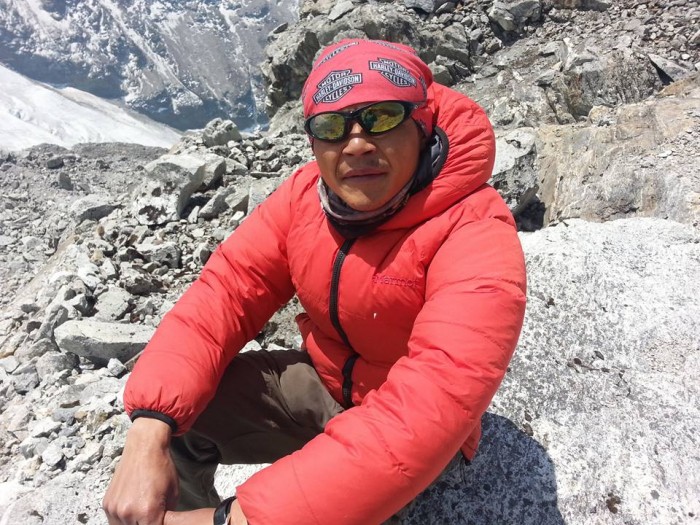The Ama Dablam Base Camp Trek is a dream adventure for many Nepali trekkers. Nestled in the Khumbu region, Ama Dablam, meaning "Mother's Necklace," is one of the most beautiful mountains in the world. For locals seeking an extraordinary trekking experience, the journey to Ama Dablam Base Camp offers stunning views, Sherpa culture, and personal achievement. Here, Himalayan Adventure International Treks provides a full breakdown of the Ama Dablam trek cost, itinerary, route map, permits, and much more.
Ama Dablam Base Camp Altitude
The Ama Dablam Base Camp altitude is 4,570 meters (14,993 feet) above sea level. It is a significant elevation, requiring trekkers to be cautious about acclimatization. Unlike higher-altitude expeditions, reaching this base camp is achievable for fit individuals without the technical demands of a full mountaineering climb.
Ama Dablam Base Camp Trek Map
Understanding the Ama Dablam Base Camp trek map is essential for planning. The trek usually starts from Lukla, passing through famous stops like Phakding, Namche Bazaar, and Pangboche. From Pangboche, trekkers ascend to the Base Camp. The route offers panoramic views of Everest, Lhotse, and of course, Ama Dablam itself.
Highlights along the map:
-
Lukla
-
Phakding
-
Namche Bazaar
-
Tengboche
-
Pangboche
-
Ama Dablam Base Camp
Pangboche to Ama Dablam Base Camp
The stretch from Pangboche to Ama Dablam Base Camp is a thrilling part of the journey. Pangboche, at an altitude of 3,985 meters, is the last village before the Base Camp. From Pangboche, trekkers cross a suspension bridge and climb through grassy slopes and rocky paths.
Pangboche to Ama Dablam Base Camp Distance
The Pangboche to Ama Dablam Base Camp distance is approximately 4 to 5 kilometers (around 2.5 to 3 miles). Although the distance is short, the altitude gain and rugged trail make it a moderate-to-challenging hike.
Ama Dablam Base Camp Trek Itinerary
Here is a typical Ama Dablam Base Camp trek itinerary offered by Himalayan Adventure International Treks:
Day 1: Fly from Kathmandu to Lukla, trek to Phakding (2,610m)
Day 2: Trek from Phakding to Namche Bazaar (3,440m)
Day 3: Acclimatization day in Namche Bazaar
Day 4: Trek to Tengboche (3,860m)
Day 5: Trek to Pangboche (3,985m)
Day 6: Hike to Ama Dablam Base Camp (4,570m) and return to Pangboche
Day 7: Trek back to Namche Bazaar
Day 8: Trek back to Lukla
Day 9: Fly back to Kathmandu
This itinerary allows proper acclimatization while providing a rewarding trekking experience.
Ama Dablam Trek Cost for Nepali Travelers
Ama Dablam trek cost for Nepali trekkers is significantly lower compared to international tourists. Here's a breakdown:
-
Flight Kathmandu-Lukla-Kathmandu: NPR 8,000 – NPR 15,000 (one way)
-
Permit Fees: Approx. NPR 6,000 (for Sagarmatha National Park and local permits)
-
Guide Cost: NPR 3,100 - NPR 3,500 per day
-
Accommodation (Tea Houses): NPR 500 - NPR 1,000 per night
-
Food: NPR 500 - NPR 1,200 per meal
-
Miscellaneous (WiFi, Charging, Snacks): NPR 2,000 - NPR 5,000
Estimated Total Cost: NPR 40,000 - NPR 70,000 per person for the entire trek.
Note: Costs vary depending on services, group size, and seasons.
How Much is the Permit for Ama Dablam?
If you plan to climb Ama Dablam, the permit costs are different from trekking. As of 2025:
However, for Ama Dablam Base Camp trek, you only need:
-
Sagarmatha National Park Permit: NPR 3,000
-
Khumbu Pasang Lhamu Rural Municipality Permit: NPR 2,000
Is Ama Dablam Base Camp Worth It?
Absolutely! Many trekkers wonder, Is Ama Dablam Base Camp worth it? The answer is a resounding yes. With its dramatic scenery, cultural richness, manageable trekking distance, and breathtaking views of Everest and surrounding giants, the trek offers an unforgettable adventure at a fraction of the cost of more famous routes like Everest Base Camp.
How Much Money Do You Need for Everest Base Camp Trek?
While the focus is Ama Dablam, many ask, How much money do you need for Everest Base Camp Trek? For Nepali citizens:
-
Budget option: NPR 70,000 - NPR 120,000
-
Standard package: NPR 100,000 - NPR 150,000
International trekkers usually spend around USD 1,200 to USD 2,500.
Can a Beginner Climb Ama Dablam?
Can a beginner climb Ama Dablam? Technically, Ama Dablam is a technical mountain requiring alpine climbing experience, including knowledge of fixed ropes, abseiling, and crampons. It is not recommended for beginners.
However, beginners can easily undertake the Ama Dablam Base Camp Trek without technical mountaineering skills. A reasonable fitness level and acclimatization are enough.
How Much Does it Cost to Trek in Nepal?
Many ask, How much does it cost to trek in Nepal? It depends on the trek:
-
Budget Treks (Annapurna, Langtang): NPR 30,000 - NPR 70,000
-
Premium Treks (Everest Base Camp, Upper Mustang): NPR 80,000 - NPR 200,000
Ama Dablam Base Camp trek fits comfortably within the budget-friendly range for Nepali trekkers.
Which is the Hardest Trek in Nepal?
If you're adventurous, you might wonder, Which is the hardest trek in Nepal?
-
Great Himalayan Trail: 150 days of extreme trekking
-
Dhaulagiri Circuit Trek: Very remote and tough
-
Makalu Base Camp Trek: Wild and isolated
Ama Dablam Base Camp Trek, by comparison, is moderate and achievable.
How Much Does it Cost to Trek to Ama Dablam Base Camp?
In short, how much does it cost to trek to Ama Dablam Base Camp?
-
Nepali Trekkers: NPR 40,000 - NPR 70,000
-
International Trekkers: USD 700 - USD 1,200 (approx.)
Costs include flights, permits, accommodation, food, and guide services.
Ama Dablam Camp 1 and Ama Dablam Camp 2
For those interested in the full expedition, knowing about Ama Dablam Camp 1 and Ama Dablam Camp 2 is important:
-
Camp 1: Located at 5,705 meters; rocky ridges and snowy platforms.
-
Camp 2: Located at 6,080 meters; considered the most exposed and challenging part of the climb.
Base Camp trekkers won't reach these camps but can view the awe-inspiring faces leading up to them.
How Long Does it Take to Climb Ama Dablam?
Wondering, How long does it take to climb Ama Dablam?
Again, trekking to the Base Camp alone requires only about 9 days round-trip.
The Ama Dablam Base Camp Trek is a spectacular journey, especially for Nepali adventurers seeking Himalayan glory without excessive costs or technical demands. With an affordable Ama Dablam trek cost, a relatively short itinerary, and mesmerizing views, it’s a perfect trekking option.
At Himalayan Adventure International Treks, we specialize in offering personalized and affordable trekking packages for Nepali and international adventurers alike. Whether you're looking for a guided trek or simply logistical support, our team ensures your Ama Dablam Base Camp dream becomes reality.
Ready to trek Ama Dablam Base Camp? Contact Himalayan Adventure International Treks today and start your Himalayan journey!

 Plan Your Trip Now
Plan Your Trip Now 


